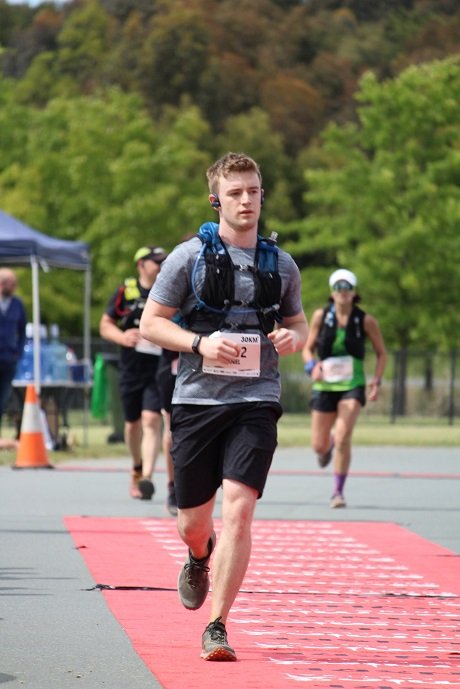What I learned training for a 30km trail run.
The Stromlo Trail Run
On Saturday the 19th of November, at 6:30 in the morning, I pushed off the starting line for the 13th Stromlo Running Festival.
The Canberra air was crisp and the sun was out, gentle rays revealing the stunning landscape of the Stromlo park and its trails.
At this point I was blissfully unaware of the pain I’d be in just two hours later.
Earlier in the year I’d made a commitment to build up my long distance running. Beyond City 2 Surf, the Stromlo Running Festival 30km trail run was the first ‘real’ running event I’d entered in. I’d been training for the previous few months, building up my kilometers and practicing a mix of road and trail running.
I had run the distance of the race in the lead up to check that I could survive 30km; typically I’d rack up my distances on the tracks of Lane Cove National Park or along the North Shore train line.
But during Stromlo, my training was shown to be woefully inadequate. After breezing through the first 13 kilometres with relative ease, cracks started to show at 15 kilometres with my left leg starting to feel heavy. At 17 kilometres in the cramps started. The first thing to go was my vastus medialis – a small, tear drop shaped part of the quadricep muscle group on the upper inside of the knee.
Every step sent sharp pains up the muscle, and this quickly spread to the rest of the quadricep. Not to be kept out of the conversation, my calf muscles and hamstrings gave me their ten cents over the coming kilometre, and quickly I was struggling to put any weight on my left leg at all.
I finished the remaining 13 kilometres in staggered efforts of jogging up to 100m (but only on flats or downhills) before my leg would cramp up again and I’d be forced to limp/walk another 20-30 paces.
I scraped by the time I needed; I was aiming to finish before 3 hours and 50 minutes in order to make the cut-off for the Six Foot Track in March and I crossed the finish line with 5 minutes to spare. I also came away with several vital learnings that I will be taking with me for my up and coming events. Here are the two big ones:
1) Know the route
Leading up to Stromlo, I had made the foolish assumption that Canberra is flat, and thus the race would be quite level. The race organisers had cited that there was 800m of elevation gain along the trails, but I had foolishly downplayed this in my mind and instead soothed myself with the reassuring ‘knowledge’ that it was a flat and easy trail.
I was wrong.
Had I looked at the actual route and what it entailed, I would have realised that the large majority of the race is either up or down hill, both of which increase muscular effort and are more challenging than a simple flat run.
2) More tempo and hill training
When you look at running training programs, you will often see hill and tempo training inserted as individual training sessions. These sessions aim to build up your tolerance to running distances by elevating the lactate threshold – the point at which lactic acid reaches a point where it cannot be cleared.
Cramps during exertion are still not fully understood, but there are two main supported theories around their aetiology. These are; electrolyte imbalances (the reason people encourage you to take salt AND water after exertion) and neuromuscular fatigue. Hitting lactate threshold imposes a significant neuromuscular burden on your body, and this was what had ‘cramped my style’ during the Stromo trail. No amount of crisps or electrolyte solution would help my leg for the remainder of the run – it had reached a point of neuromuscular fatigue that it was not going to shake off quickly and needed rest.
I had been diligent with my long runs, logging kilometres with my headphones in on the weekends, but now I’ve been sure to put in a lot more tempo and lactate work – I’m vowing to never find myself in that same situation that I was in at Stromlo; halfway through a long race without a leg to stand on.
Overall, the Stromlo Running Festival was a positive experience. Yes, it hurt, but I learned a lot and still managed to finish within the time I needed. As a newbie to running, I didn’t set myself any high expectations and am proud that I was able to push through to the finish. I’m looking forward to future events, especially the Six Foot Track in March of next year; a 45km trail running event, my legs will need to be much stronger before I can reasonably expect to complete it without my leg shutting down on me.
At the finish line: All I’m thinking is “please don’t cramp, please don’t cramp”
At the 26km mark, after just walking up a steep hill, the photographer asked me to “run for the camera”. I laughed, I’m not sure if he knew why..


